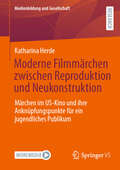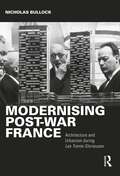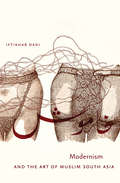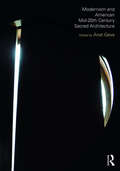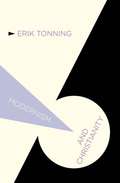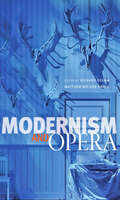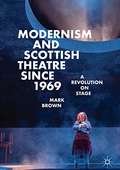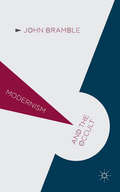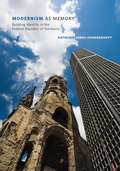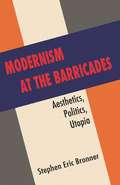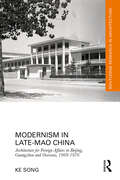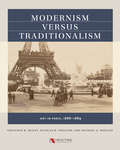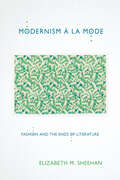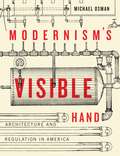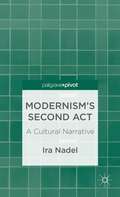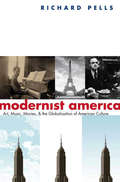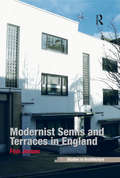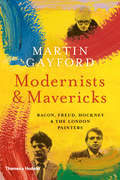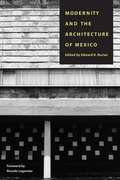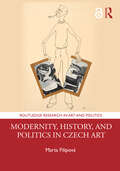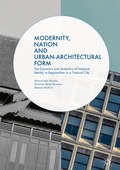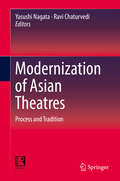- Table View
- List View
Moderne Filmmärchen zwischen Reproduktion und Neukonstruktion: Märchen im US-Kino und ihre Anknüpfungspunkte für ein jugendliches Publikum (Medienbildung und Gesellschaft #53)
by Katharina HerdeDas US-Kino nimmt sich seit einiger Zeit wieder europäischen Märchenstoffen an und erzählt die Geschichten vermeintlich neu. Dabei sprechen die Filme nicht mehr nur Kinder und Familien an, sondern stellen Themenaspekte in den Vordergrund, die in der Jugendphase von besonderer Relevanz sind. In einer detaillierten filmanalytischen Auseinandersetzung, die qualitative und quantitative Methoden nutzt, werden in diesem Buch sechs moderne Filmmärchen auf ihren Umgang mit den Märchenstoffen Aschenputtel und Schneewittchen hin untersucht sowie die Anknüpfungspotenziale für jugendliche Rezipient*innen herausgearbeitet. Dabei wird nicht nur auf die Themen selbst eingegangen, sondern auch auf die Art und Weise, wie diese in den Filmen thematisiert werden. Zudem wird dargelegt welche Normen und Werte über sie vermittelt werden. Das Buch zeigt auf, wie aktuell Märchenstoffe bis heute im US-Kino sind, wie die Filme mit dem Ruf der Märchen als Kindermedien brechen, was über die Filme vermittelt wird und wie letztendlich bekannte Erzählinhalte reproduziert und dabei gleichzeitig neu konstruiert werden.
Modernising Post-war France: Architecture and Urbanism during Les Trente Glorieuses
by Nicholas BullockThis book is about the role played by architects, engineers and planners in transforming France during the three post-war decades of growing prosperity, a period when modernisation was a central priority of the state, promising a way forward from the shame of defeat in 1940 to a place at the centre of the new Europe. The first part of the book examines the scale of transformation, showing how architecture and urbanism both served the cause of modernisation and shaped the identity of the new France. Mainstream modernism was co-opted to the service of the state, from major public buildings to Gaullist plans for the transformation of Paris to establish the city as the ‘capital’ of Europe. By contrast, the second part of the book explores the critique of state-sponsored modernisation by radical architects from Le Corbusier to the young Turks of the 1960s such as Georges Candilis and the students who attacked the banality of mainstream modernism and its inability to address the growing problems of France’s cities. Following May 1968, the Beaux-Arts was closed, the Grand Prix de Rome, symbol of the old order, abolished – for a while the establishment might continue as before, but progressive architecture was set on a new course. Beautifully illustrated and written to be accessible to all, the book sets the discussion of architecture and urbanism in its social, political and economic contexts. As such, it will appeal both to students and scholars of the history of architecture and urbanism and to those with a wider interest in France’s post-war history.
Modernism And The Art Of Muslim South Asia
by Iftikhar DadiThis pioneering work traces the emergence of the modern and contemporary art of Muslim South Asia in relation to transnational modernism and in light of the region's intellectual, cultural, and political developments. Art historian Iftikhar Dadi here explores the art and writings of major artists, men and women, ranging from the late colonial period to the era of independence and beyond. He looks at the stunningly diverse artistic production of key artists associated with Pakistan, including Abdur Rahman Chughtai, Zainul Abedin, Shakir Ali, Zubeida Agha, Sadequain, Rasheed Araeen, and Naiza Khan. Dadi shows how, beginning in the 1920s, these artists addressed the challenges of modernity by translating historical and contemporary intellectual conceptions into their work, reworking traditional approaches to the classical Islamic arts, and engaging the modernist approach towards subjective individuality in artistic expression. In the process, they dramatically reconfigured the visual arts of the region. By the 1930s, these artists had embarked on a sustained engagement with international modernism in a context of dizzying social and political change that included decolonization, the rise of mass media, and developments following the national independence of India and Pakistan in 1947. Bringing new insights to such concepts as nationalism, modernism, cosmopolitanism, and tradition, Dadi underscores the powerful impact of transnationalism during this period and highlights the artists' growing embrace of modernist and contemporary artistic practice in order to address the challenges of the present era. This pioneering work traces the emergence of the modern and contemporary art of Muslim South Asia in relation to transnational modernism and in light of the region's intellectual, cultural, and political developments. Bringing new insights to such concepts as nationalism, modernism, cosmopolitanism, and tradition, Dadi underscores the powerful impact of transnationalism during this period and highlights the artists' growing embrace of modernist and contemporary artistic practice in order to address the challenges of the present era.
Modernism and American Mid-20th Century Sacred Architecture
by Anat GevaMid-20th century sacred architecture in America sought to bridge modernism with religion by abstracting cultural and faith traditions and pushing the envelope in the design of houses of worship. Modern architects embraced the challenges of creating sacred spaces that incorporated liturgical changes, evolving congregations, modern architecture, and innovations in building technology.The book describes the unique context and design aspects of the departure from historicism, and the renewal of heritage and traditions with ground-breaking structural features, deliberate optical effects and modern aesthetics. The contributions, from a pre-eminent group of scholars and practitioners from the US, Australia, and Europe are based on original archival research, historical documents, and field visits to the buildings discussed. Investigating how the authority of the divine was communicated through new forms of architectural design, these examinations map the materiality of liturgical change and communal worship during the mid-20th century.
Modernism and Christianity
by Erik TonningBy theorising the idea of 'formative tensions' between cultural Modernism and Christianity, and by in-depth case studies of James Joyce, David Jones, T. S. Eliot, Ezra Pound, W. H. Auden, Samuel Beckett, the book argues that no coherent account of Modernism can ignore the continuing impact of Christianity.
Modernism and Opera (Hopkins Studies in Modernism)
by Richard Begam and Matthew Wilson SmithMany of the greatest works in the operatic repertoire bear the hallmarks of modernism.At first glance, modernism and opera may seem like strange bedfellows—the former hostile to sentiment, the latter wearing its heart on its sleeve. And yet these apparent opposites attract: many operas are aesthetically avant-garde, politically subversive, and socially transgressive. From the proto-modernist strains of Richard Wagner’s Parsifal through the twenty-first-century modernism of Kaija Saariaho’s L’amour de loin, the duet between modernism and opera, at turns harmonious and dissonant, has been one of the central artistic events of modernity. Despite this centrality, scholars of modernist literature only rarely venture into opera, and music scholars generally return the favor by leaving literature to one side. But opera, that grand cauldron of the arts, demands that scholars, too, share the stage with one another.In Modernism and Opera, Richard Begam and Matthew Wilson Smith bring together musicologists, literary critics, and theater scholars for the first time in a mutual endeavor to trace certain key moments in the history of modernism and opera. This innovative volume includes essays from some of the most notable scholars in their fields and covers works as diverse as Debussy’s Pelléas et Mélisande, Bartók’s Bluebeard’s Castle, Berg’s Wozzeck, Janáček’s Makropulos Case, Thomson’s Four Saints in Three Acts, Strauss’s Arabella, Schoenberg’s Moses und Aron, Stravinsky’s The Rake’s Progress, Britten’s Gloriana, and Messiaen’s Saint François d’Assise. A collaborative study of the ultimate collaborative art form, Modernism and Opera reveals how modernism and opera illuminate each other and, more generally, the culture of the twentieth century. It also addresses a number of issues crucial for understanding the relation between modernism and opera, focusing in particular on intermediality (how modernism integrates music, literature, and drama into opera) and anti-theatricality (how opera responds to modernism’s apparent antipathy to theatricality). This captivating book—the first of its kind—will appeal to scholars of literature, music, theater, and modernity as well as to sophisticated opera lovers everywhere.
Modernism and Scottish Theatre since 1969: A Revolution on Stage
by Mark BrownThis book argues that Scottish theatre has, since the late 1960s, undergone an artistic renaissance, driven by European Modernist aesthetics. Combining detailed research and analysis with exclusive interviews with ten leading figures in modern Scottish drama, the book sets out the case for the last half-century as the strongest period in the history of the Scottish stage. Mark Brown traces the development of Scottish theatre’s Modernist revolution from the arrival of influential theatre director Giles Havergal at the Citizens Theatre, Glasgow in 1969 through to the advent of the National Theatre of Scotland in 2006. Finally, the book contemplates the future of Scotland’s theatrical renaissance. It is essential reading for anyone interested in contemporary theatre and/or the modern history of live drama in Scotland.
Modernism and The Occult
by John BrambleThis study of modernism's high imperial, occult-exotic affiliations presents many well-known figures from the period 1880-1960 in a new light. Modernism and the Occult traces the history of modernist engagement with 'irregular', heterodox and imported knowledge.
Modernism and the Professional Architecture Journal: Reporting, Editing and Reconstructing in Post-War Europe
by Torsten Schmiedeknecht Andrew PeckhamThe production of this book stems from two of the editors’ longstanding research interests: the representation of architecture in print media, and the complex identity of the second phase of modernism in architecture given the role it played in postwar reconstruction in Europe. While the history of postwar reconstruction has been increasingly well covered for most European countries, research investigating postwar architectural magazines and journals across Europe – their role in the discourse and production of the built environment and particularly their inter-relationship and differing conceptions of postwar architecture – is relatively undeveloped. Modernism and the Professional Architecture Journal sounds out this territory in a new collection of essays concerning the second phase of the reception and assimilation of modernism in architecture, as it was represented in professional architecture journals during the period of postwar reconstruction (1945–1968). Professional architecture journals are often seen as conduits of established facts and knowledge. The role mainstream publications play, however, in establishing ‘movements’, ‘trends’ or ‘debates’ tends to be undervalued. In the context of the complex undertaking of postwar reconstruction, the shortage of resources, political uncertainty and the biographical complexities of individual architects, the chapters on key European architecture journals collected here reveal how modernist architecture, and its discourse, was perceived and disseminated in different European countries.
Modernism and the Spirit of the City
by Iain Boyd WhyteModernism and the Spirit of the City offers a new reading of the architectural modernism that emerged and flourished in Europe in the first half of the twentieth century. Rejecting the fashionable postmodernist arguments of the 1980s and '90s which damned modernist architecture as banal and monotonous, this collection of essays by eminent scholars investigates the complex cultural, social, and religious imperatives that lay below the smooth, white surfaces of new architecture.
Modernism as Memory: Building Identity in the Federal Republic of Germany
by Kathleen James-ChakrabortyAfter World War II, West Germans and West Berliners found ways of communicating both their recent sufferings and aspirations for stable communities through buildings that fused the ruins of historicist structures with new constructions rooted in the modernism of the 1910s and &‘20s. As Modernism as Memory illustrates, these postwar practices undergird the approaches later taken in influential structures created or renovated in Berlin following the fall of the Wall, including the Jewish Museum and the Reichstag, the New Museum and the Topography of Terror.While others have characterized contemporary Berlin&’s museums and memorials as postmodern, Kathleen James-Chakraborty argues that these environments are examples of an &“architecture of modern memory&” that is much older, more complex, and historically contingent. She reveals that churches and museums repaired and designed before 1989 in Düren, Hanover, Munich, Neviges, Pforzheim, Stuttgart, and Weil am Rhein contributed to a modernist precedent for the relationship between German identity and the past developed since then in the Ruhr region and in Berlin. Modernism as Memory demonstrates that how one remembers can be detached from what one remembers, contrasting ruins with recollections of modernism to commemorate German suffering, the Holocaust, and the industrial revolution, as well as new spaces for Islam in the country.
Modernism at the Barricades: Aesthetics, Politics, Utopia (Columbia Studies In Political Thought/Political History (coup))
by Stephen Eric BronnerStephen Eric Bronner revisits the modernist project's groundbreaking innovations, itsexperimental imagination, and its utopian politics. Reading the artistic and intellectual achievements of the movement's leading figures against larger social, political, and cultural trends, he follows the rise of a flawed yet salient effort at liberation and its confrontation with modernity.Modernism at the Barricades features chapters on expressionism, futurism, surrealism, and revolutionary art and includes fresh perspectives on the work of Arnold Schoenberg, Wassily Kandinsky, and Emil Nolde, among others. The volume illuminates an international avant garde intent on resisting bureaucracy, standardization, scientific rationality, and the increasing commodification of mass culture. Modernists sought new ways of feeling, new forms of expression, and new possibilities of experience while seeking to refashion society. Liberation was their aim, along with the invigoration of daily life—yet their process entangled political resistance with the cultural. Exploring both the political responsibility of the artist and the manipulation of authorial intention, Bronner reconfigures the modernist movement for contemporary progressive purposes and offers insight into the problems still complicating cultural politics. He ultimately reasserts the political dimension of developments often understood in purely aesthetic terms and confronts the self-indulgence and political irresponsibility of certain so-called modernists today. The result is a long overdue reinterpretation and rehabilitation of the modernist legacy for a new age.
Modernism in Late-Mao China: Architecture for Foreign Affairs in Beijing, Guangzhou and Overseas, 1969–1976 (Routledge Research in Architecture)
by Ke SongThis book investigates the architectural history of China in the Mao era (1949–1976), focusing on the rise of modernism in the last seven years of the Cultural Revolution from 1969 to 1976. It highlights the new architecture of this period, exemplified by three clusters of buildings for foreign affairs, namely buildings for foreign diplomacy in Beijing, buildings for foreign trade in Guangzhou and China’s foreign aid projects overseas. The emergence of new architecture in the early 1970s is closely associated with China’s political and diplomatic shift of the time, from a radical emphasis on ideological struggle to a dynamic balance between leftist ideology and pragmatic concerns. In this context, China’s relations with the West quickly improved, culminating with American president Richard Nixon’s visit to China in 1972. The increasing foreign affairs brought new opportunities to Chinese architects who referenced both Western modernism and Chinese architectural traditions to create a new version of Chinese modernism. The book brings dimensions of form, politics and knowledge to the analysis of architecture, to construct an understanding of architectural design as an aesthetic, political and intellectual practice. Modernism in Late-Mao China will be an enriching and useful reference for students and scholars who are interested in the global architectural history of the twentieth century, especially Cold War modernism.
Modernism versus Traditionalism: Art in Paris, 1888-1889
by Nicolas W. Proctor Gretchen K. McKay Michael A. MarlaisModernism vs. Traditionalism: Art in Paris 1888-1889 considers questions surrounding artistic developments at the end of the nineteenth century in Paris. Students will debate principles of artistic design in the context of the revolutionary changes that began shaking the French art world in 1888-1889. Images from the 1888 Salon and the tumultuous year that followed provide some of the "texts" that form the intellectual heart of every reacting game. Styles include conservative art espoused by the Academy, as well as more avant-garde art created by artists such as Van Gogh and Gauguin. Also included are the Impressionists and American artists in Paris. Students must read paintings as texts and use them as the basis of their positions in advocating for the future of art. In addition to these visual texts, students will read art criticism from the period, which will help form the basis of their own presentations in favor of one art style over another. These discussions are complicated and enriched by secondary debates over the economics of art, the rise of independent art dealers, and the government's role as a patron of the arts. The game culminates at the 1889 World Exposition in Paris.
Modernism à la Mode: Fashion and the Ends of Literature
by Elizabeth M. SheehanModernism à la Mode argues that fashion describes why and how literary modernism matters in its own historical moment and ours. Bringing together texts, textiles, and theories of dress, Elizabeth Sheehan shows that writers, including Virginia Woolf, D.H. Lawrence, W.E.B. Du Bois, Nella Larsen, and F. Scott Fitzgerald, turned to fashion to understand what their own stylized works could do in the context of global capital, systemic violence, and social transformation. Modernists engage with fashion as a mood, a set of material objects, and a target of critique, and, in doing so, anticipate and address contemporary debates centered on the uses of literature and literary criticism amidst the supposed crisis in the humanities. A modernist affect with a purpose, no less.By engaging modernism à la mode—that is, contingently, contextually, and in light of contemporary concerns—this book offers an alternative to the often-untenable distinctions between strong or weak, suspicious or reparative, and politically activist or quietist approaches to literature, which frame current debates about literary methodology. As fashion helps us to describe what modernist texts do, it enables us to do more with modernism as a form of inquiry, perception, and critique. Fashion and modernism are interwoven forms of inquiry, perception, and critique, writes Sheehan. It is fashion that puts the work of early twentieth-century writers in conversation with twenty-first century theories of emotion, materiality, animality, beauty, and history.
Modernism's Visible Hand: Architecture and Regulation in America (Buell Center Books in the History and Theory of American Architecture)
by Michael OsmanA groundbreaking history of the confluence of regulatory thinking and building design in the United States What is the origin of &“room temperature&”? When did food become considered fresh or not fresh? Why do we think management makes things more efficient? The answers to these questions share a history with architecture and regulation at the turn of the twentieth century. This pioneering technological and architectural history of environmental control systems during the Gilded Age begins with the premise that regulation—of temperature, the economy, even the freshness of food—can be found in the guts of buildings. From cold storage and scientific laboratories to factories, these infrastructures first organized life in a way we now call &“modern.&”Drawing on a range of previously unexplored archival resources, Michael Osman examines the increasing role of environmental technologies in building design from the late nineteenth century. He shows how architects appropriated and subsumed the work of engineers as thermostats, air handlers, and refrigeration proliferated. He argues that this change was closely connected to broader cultural and economic trends in management and the regulation of risk. The transformation shaped the evolution of architectural modernism and the development of the building as a machine. Rather than assume the preexisting natural order of things, participants in regulation—including architects, scientists, entrepreneurs, engineers, managers, economists, government employees, and domestic reformers—became entangled in managing the errors, crises, and risks stemming from the nation&’s unprecedented growth.Modernism&’s Visible Hand not only broadens our conception of how industrial capitalism shaped the built environment but is also vital to understanding the role of design in dealing with ecological crises today.
Modernism, Male Friendship, And The First World War
by Sarah ColeSarah Cole examines the rich literary and cultural history of masculine intimacy in the twentieth century. Cole approaches this complex and neglected topic from many perspectives - as a reflection of the exceptional social power wielded by the institutions that housed and structured male bonds; as a matter of closeted and thwarted homoerotics; as part of the story of the First World War. Cole shows that the terrain of masculine fellowship provides an important context for understanding key literary features of the modernist period. She foregrounds such crucial themes as the over-determined relations between imperial wanderers in Conrad's tales, the broken friendships that permeate Forster's fictions, Lawrence's desperate urge to make culture out of blood brotherhood and the intense bereavement of the war poet. Cole argues that these dramas of compelling and often tortured male friendship have helped to define a particular spirit and voice within the literary canon.
Modernism’s Second Act: A Cultural Narrative
by Ira NadelEuropean modernism underwent a massive change from 1930 to 1960, as war altered the cultural landscape. This account of artists and writers in France and England explores how modernism survived under authoritarianism, whether Fascism, National Socialism, or Stalinism, and how these artists endured by balancing complicity and resistance.
Modernist America: Art, Music, Movies, and the Globalization of American Culture
by Richard PellsAmerica's global cultural impact is largely seen as one-sided, with critics claiming that it has undermined other countries' languages and traditions. But contrary to popular belief, the cultural relationship between the United States and the world has been reciprocal, says Richard Pells. The United States not only plays a large role in shaping international entertainment and tastes, it is also a consumer of foreign intellectual and artistic influences. Pells reveals how the American artists, novelists, composers, jazz musicians, and filmmakers who were part of the Modernist movement were greatly influenced by outside ideas and techniques. People across the globe found familiarities in American entertainment, resulting in a universal culture that has dominated the twentieth and twenty-first centuries and fulfilled the aim of the Modernist movement--to make the modern world seem more intelligible. Modernist America brilliantly explains why George Gershwin's music, Cole Porter's lyrics, Jackson Pollock's paintings, Bob Fosse's choreography, Marlon Brando's acting, and Orson Welles's storytelling were so influential, and why these and other artists and entertainers simultaneously represent both an American and a modern global culture.
Modernist Semis and Terraces in England (Ashgate Studies in Architecture)
by Finn JensenBetween the two World Wars, there was an unprecedented need for new houses in Britain which resulted in a building boom. While only a small percentage of this building took the form of Modernism, there was still a significant number of semis and terraces built for the workers and middle-class families in the 1920s and 1930s built in this style. This book examines these modest Modernist houses within the broader context of the Modern Movement in Europe, as well as the inter-war building boom in suburban Britain. Illustrated with line drawings and photographs of more than 30 examples from around the country, and based on little-known contemporary material such as catalogues, advertisements, radio broadcasts and letters, it shows how these houses speak of a time of political, social and artistic unrest, and a world where the avant-garde architects sought to capture the spirit of modern technology in their designs for the average home owner. While the Modernist houses never became popular with the general public, the fact that so many are still standing and now sought after by twenty-first century families speak for their endurance and special appeal.
Modernists and Mavericks: Bacon, Freud, Hockney And The London Painters
by Martin GayfordMartin Gayford’s masterful account of painting in London from the Second World War to the 1970s, illustrated by documentary photographs and the works themselves The development of painting in London from the Second World War to the 1970s has never before been told before as a single narrative. R. B. Kitaj’s proposal, made in 1976, that there was a “substantial School of London” was essentially correct but it caused confusion because it implied that there was a movement or stylistic group at work, when in reality no one style could cover the likes of Francis Bacon and also Bridget Riley. Modernists and Mavericks explores this period based on an exceptionally deep well of firsthand interviews, often unpublished, with such artists as Victor Pasmore, John Craxton, Lucian Freud, Frank Auerbach, Allen Jones, R. B. Kitaj, Euan Uglow, Howard Hodgkin, Terry Frost, Gillian Ayres, Bridget Riley, David Hockney, Frank Bowling, Leon Kossoff, John Hoyland, and Patrick Caulfield. But Martin Gayford also teases out the thread weaving these individual lives together and demonstrates how and why, long after it was officially declared dead, painting lived and thrived in London. Simultaneously aware of the influences of Jackson Pollock, Giacometti, and (through the teaching passed down at the major art school) the traditions of Western art from Piero della Francesca to Picasso and Matisse, the postwar painters were bound by their confidence that this ancient medium could do fresh and marvelous things, and explored in their diverse ways, the possibilities of paint.
Modernity and the Architecture of Mexico
by Edward R. BurianSince the mid 1970s, there has been an extraordinary renewal of interest in early modern architecture, both as a way of gaining insight into contemporary architectural culture and as a reaction to neoconservative postmodernism. This book undertakes a critical reappraisal of the notion of modernity in Mexican architecture and its influence on a generation of Mexican architects whose works spanned the 1920s through the 1960s.
Modernity, History, and Politics in Czech Art (Routledge Research in Art and Politics)
by Marta FilipováThis book traces the influence of the changing political environment on Czech art, criticism, history, and theory between 1895 and 1939, looking beyond the avant-garde to the peripheries of modern art. The period is marked by radical political changes, the formation of national and regional identities, and the rise of modernism in Central Europe – specifically, the collapse of Austria-Hungary and the creation of the new democratic state of Czechoslovakia. Marta Filipová studies the way in which narratives of modern art were formed in a constant negotiation and dialogue between an effort to be international and a desire to remain authentically local.
Modernity, Nation and Urban-Architectural Form: The Dynamics and Dialectics of National Identity vs Regionalism in a Tropical City
by Shireen Jahn Kassim Norwina Mohd Nawawi Mansor IbrahimThis book explores how Malaysia, as a multicultural modern nation, has approached issues of nationalism and regionalism in terms of physical expression of the built environment. Ever since the nation’s post-Colonial era, architects and policy makers have grappled with the theoretical and practical outcomes of creating public architecture that effectively responds to traditions, nationhood and modernity. The authors compile and analyse prevailing ideas and strategies, present case studies in architectural language and form, and introduce the reader to tensions arising between a nationalist agenda and local ‘regionalist’ architectural language. These dichotomies represent the very nature of multicultural societies and issues with identity; a challenge that various nations across the globe face in a changing environment. This topical and pertinent volume will appeal to students and scholars of urban planning, architecture and the modern city.
Modernization of Asian Theatres: Process and Tradition
by Yasushi Nagata Ravi ChaturvediThis volume focuses on the theatre history of Asian countries, and discusses the specific context of theatre modernization in Asia. While Asian theatre is one of the primary interests within theatre scholarship in the world today, knowledge of Asian theatre history is very limited and often surprisingly incorrect. Therefore, this volume addresses a major gap in contemporary theatre studies. The volume discusses the conflict between tradition and modernity in theatre, suggesting that the problems of modernity are closely related to the idea of tradition. Although Asian countries preserved the traditional form and values of their respective theatres, they had to also confront the newly introduced values or mechanisms of European modernity. Several papers in this volume therefore provide critical surveys of the history of theatre modernization in Asian countries or regions—Japan, Korea, Taiwan, Hong Kong, India Malaysia, Singapore, and Uyghur. Other papers focus on specific case studies of the history of modernization, discussing contemporary Taiwanese performances, translations of modern French comedy into Chinese, the modernization of Chinese Xiqu, modern Okinawan plays, Malaysian traditional performances, Korean national theatre, and Japanese plays during World War II. Renowned academics and theatre critics have contributed to this volume, making it a valuable resource for researchers and students of theatre studies, literature, and cultural studies.
